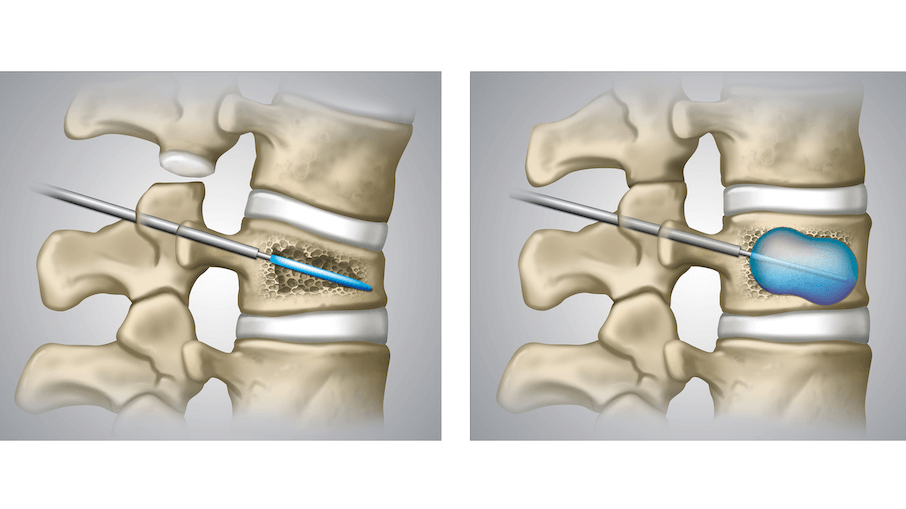Bring on the Celebratory Balloons: Kyphoplasty for Relieving Back Pain
&srotate=0)
Kyphoplasty for Vertebral Compression Fractures
Kyphoplasty is a minimally invasive spinal procedure used to treat back pain caused by vertebral compression fractures. Compression fractures typically result from age-related degeneration, trauma, or diseases such as osteoporosis and cancer. Each of these factors can cause the vertebrae in a person’s spine to collapse, resulting in severe back pain, limited range of motion, loss of height, and even visible deformities in the spine.
Determining Candidacy for Kyphoplasty Treatment
Kyphoplasty is typically reserved for patients experiencing progressive back pain, and these candidates are also often suffering from reduced movement and ability to function. In order to decide if someone is a candidate for kyphoplasty, a physician will first confirm that a patient’s back pain is caused by compression fractures rather than other problems, such as a disc herniation or arthritis. Additionally, a patient’s back pain must be related to acute compression fractures; kyphoplasty cannot be used to treat old or chronic spinal fractures. Diagnostic imaging, typically in the form of an MRI, is taken to confirm any compression fractures. This imaging is then reviewed by a provider during a complete physical exam before final approval is granted .
What To Expect Before, During, and After Treatment
For the procedure, a patient is first given local anesthetic so that he or she is unable to feel pain at the procedure location. The procedure can also be performed under general anesthesia, meaning the patient will be asleep and unable to feel pain for the entire procedure. While the patient is lying on his or her stomach, a small incision will be made into their back to gain access to the fractured vertebrae. Next, special needles are used to carefully place an inflatable balloon in the compressed vertebrae. Once in the correct position, the balloon is inflated with contrast medication to heighten the vertebrae and relieve compression. The contrast medication allows the physician to confirm appropriate balloon placement and height elevation of the vertebrae.
Once the height and placement are confirmed, special bone cement will be injected into the space in the vertebrae created by the inflated balloon. The cement ensures a more permanent restoration of height whilst also adding strength to the spinal column to alleviate pain and prevent reinjury. After the procedure, patients are closely monitored to watch for any complications.
As with any spinal surgery, there are risks of infection, bleeding, or damage to the spinal cord; however, the risk of kyphoplasty related complications is estimated to be less than 4%. The surgery is typically performed as an outpatient procedure that lasts about two hours, and most patients go home the same day. Most patients will be able to return to normal activities within one week of the procedure, however all patients must avoid heavy lifting and strenuous activity for 6 weeks as part of the recovery process. It is also typical for patients to receive a referral for a back brace to support their recovery.
What Does the Research Say?
Kyphoplasty is a low-risk procedure that can provide near immediate relief to patients experiencing back pain from vertebral compression fractures. Most patients experience relief within 48 hours of the procedure, and some even report immediate relief as they are headed home to begin recovery. Previous studies estimate that the success rate for this procedure managing pain is around 96%. One study on patients that suffered from restricted mobility due to vertebral compression fractures reported approximately a 75% success rate for recovery of lost mobility and increased activity following the procedure. Prior research also shows a 22% reduction in mortality when compression fractures are treated with kyphoplasty compared to non surgical management.
If you are suffering from severe back pain and want to explore the treatment benefits of the kyphoplasty procedure, contact the Ospina office and schedule your consultation today! Dr. Raj Maniam and Dr. Matthew Kohler are trained anesthesia and pain management specialists capable of performing the kyphoplasty procedure for qualifying patients.
Written By: Ashley Knebel
Edited By: Camden Rowe